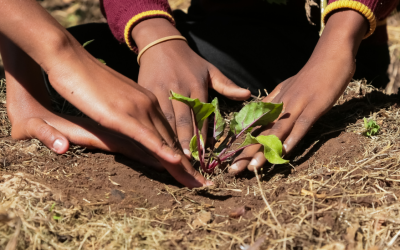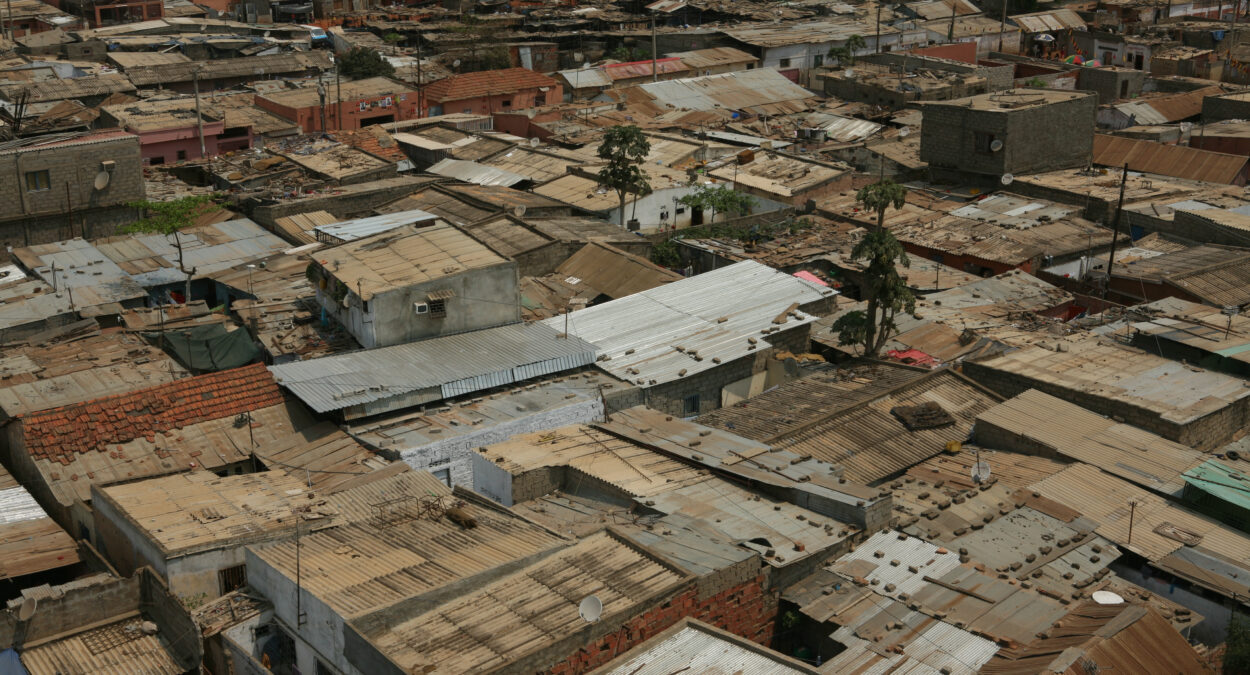CURRENT LIVING CONDITIONS IN ANGOLA
SCHOOL
During the colonial period, little attention was paid to education, which is still clearly noticeable in the country today. Since 2002, efforts have been underway to rectify this situation. Angola introduced school reforms to provide more relevant educational content. However, less than two-thirds of school-age children attend school at all. More than half of the adult population has no school-leaving qualifications at all.
Around one fifth each have a primary, intermediate or secondary school degree, and around two percent of the population actually have a university degree. Angola has just under ten state universities and a growing number of private ones. All of them are located in the capital Luanda, but the institutes are often spread all over the country. Together with foreign aid organisations, about 8,000 teachers are being trained every year. Overall, the Angolan education system is in a rather poor position, despite all efforts; almost 30 percent of the population is still illiterate, with a strong preponderance of women.
MEDICINE
In 2006 and 2007, a cholera epidemic swept through the country. More than 3000 people fell victim to it. It peaked in April 2007 with an incidence of almost 1000 cases daily. The under-five mortality rate is the second highest in the world. The state spends little money on healthcare.Although treatment in the state clinics is free of charge, only a very small proportion of the population actually has access. Most of the clinics are located in the capital Luanda. They do not meet the same standards as those of industrialised nations. Staff are poorly trained, the facilities are severely underfunded and understaffed. Angolans who can afford it therefore opt for the private sector of care and go to Namibia, Cuba, Spain and Portugal for more advanced treatment. Even the really important pharmacies, "farmácias", are only to be found in the capital. The rural population rarely has access to these.
Water
Only 40% of the population in Angola have access to sufficient, clean drinking water. During colonial times and the civil war, there were periods of drought every now and then, but since 2012 it has been extremely bad. One million people are said to have already fallen victim to the effects. Experts see the causes not so much in the lack of water, but in water management. When it rains in the south, it rains hard. You have to store and distribute the water sensibly. Neighbourhood irrigation projects show how it could be done right. In Angola, there is a current lack of initiative, but above all a lack of resources. Model projects by aid organisations have shown that the situation could be managed in the same way. Traditionally, the government is far too concerned with its own situation and pays little attention to agricultural issues. However, there are signs of a rethink.
nutrition
The food situation in the country can only be regarded as devastating. Angola ranks a dismal 97th (out of 116) on the World Hunger Assistance WHI scale. The majority of the population suffers from hunger and poverty. The country's agricultural production is not even sufficient to cover its own needs. Angola is therefore dependent on food imports from abroad. In the past three years, the ongoing food crisis has been further fuelled by devastating droughts, with crop failures of up to 40 percent. The few remaining fertile land areas are given priority by the government to cattle ranchers, which drives urban sprawl even further. Around a third of the population therefore already live partly or entirely on aid supplies from abroad.

Geography
Angola is located in the south-west of Africa. The African state borders the Democratic Republic of Congo in the north, Zambia in the east and Namibia in the south. The west coast runs along the Atlantic Ocean. Geographically, the Republic of Angola is located on the west coast between the fourth and eighteenth southern latitudes. The territory is divided widely into a narrow lowland along the Atlantic coast. This in turn rises towards the Blé highlands to the east. In terms of size, the Blé highlands occupy almost the entirety of Angola.
In the south, you are more likely to encounter flat areas. Towards the centre of the country, however, it becomes increasingly mountainous. In the Angolan highlands, the highest mountain called "Môco", 2619m above sea level, attracts admiring views from travellers. Several rivers contribute to the drainage of the highlands to the north, east and south. To the east of Angola there are long stretches of dry savannah, which are sparsely populated. Somewhat off the beaten track, on the northern edge of Angola, lies the Cabinda Exclave. It is surrounded by the Democratic Republic of Congo as well as Congo itself. Some oil fields were found there, which made them valuable and interesting for foreign countries. Three climate zones traverse the country. The climate is tropical on the coast and in the north. Year-round temperatures there are between 25-30° Celsius, and the rainy season is from November to April. The cool Benguela Current has a significant influence on the weather. In the highlands and in the south, it is rather temperate-tropical, there are clear temperature differences between day and night, and there is also a pronounced dryness. In the southeast it is hot and dry, but there are cold nights and little precipitation, especially in winter.
WHAT THREATENS THE PEOPLE OF THE COUNTRY?
The conflicts between the still hostile civil war parties are deeply rooted in the population and largely unresolved. Added to this are the hardships of an existential nature, which are becoming increasingly acute. The climate crisis intensifies natural events to which the country has always been defenceless. Unequal distribution of goods and corruption hamper the country's development. Ethnic conflicts add to the problem. Due to the autocratic regime, Angola is far from asserting basic human rights. Again and again there are arbitrary arrests by police forces, there is no freedom of assembly, hardly any freedom of the press.
The social peace is constantly in danger because there is no state protection whatsoever. The living conditions in Angola are considered "potentially violent" by international observers. There is little protection against arbitrary action and crime, the population suffers from insecure social conditions and local conflicts, which are often fought with weapons. And hunger and poverty reign supreme.

History
The historiography as well as the emergence of the country of Angola has its beginning around the sixth century AD. At that time, the Bantu people settled in what is now the territory of Angola. According to tradition, it was they who drove away the "bushmen" living there. Around 1400, the northern parts of the area belonged to the vast Kingdom of Congo. This was followed by the colonial period, during which Portuguese sailors explored the land around the Congo. Around the 15th century, trading settlements were established along the coast. As a result, the population was gradually Christianised and partly integrated into existing trade relations, mainly the slave trade. Black slaves from the heart of the country in particular were used by the Portuguese as trade goods. They shipped them until the middle of the 19th century, mainly to the Caribbean islands and to Central and South America. Finally, in 1575, the military base of Luanda was established, which is now the capital of Angola.
Nevertheless, the conquest of the country was not an easy task for the Portuguese seafarers. The Portuguese, confident of victory, faced strong resistance from the locals in the interior region of the country in particular. A complete subjugation of the population was therefore not possible until the 19th century. With the international ban on the slave trade in the mid-19th century, the Portuguese colonial masters focused on coffee and sugar cane cultivation and forced the Angolan population to work for them on the plantations. From about 1920 until the 1960s, there was a classical colonial administration by Portugal, which was itself under a military dictatorship at the time. A first turning point came in 1951, when Portugal, the mother country, transformed Angola into an overseas province.
THE STORY AFTER THE 1960S
In some cases, the inhabitants of Angola even gained civil rights. This was followed by a strengthening of anti-colonial forces, which led to the liberation of several African countries from the colonial powers in the 1960s. Until 1974, the country was engulfed in the war of independence. On 25 April 1974, the Salazar regime came to an end in mainland Portugal, which led to the immediate decolonisation of its overseas territories. Angola won its independence on 11 November 1975 and constituted itself as a Marxist "People's Republic of Angola" along Eastern European lines. Another government was immediately set up for the anti-communist "Republic of Angola".
Their irreconcilable differences led directly to a civil war. Years of bloody conflicts followed, with the support of the Eastern bloc and also the Western powers. It was not until 1991 that the warring groups agreed on a multi-party system. Accusations of multiple electoral fraud caused the civil war to flare up repeatedly and rage until 1994. Since the signing of the Lusaka Protocol, a functioning multiparty system has formally prevailed, but it is de facto overlaid by an authoritarian presidential system, which means that the actual exercise of power lies with the president.

Economics
With a gross domestic product of almost one hundred billion US dollars, Angola is the third largest economy on the southern sub-Saharan continent of Africa after South Africa and Nigeria. Despite enormous oil reserves, diamond deposits and rich mineral resources, however, most of Angola's people live in poverty. The economic development of the last seventy years has been hit particularly hard by the civil war. Contributing to this has been the traditionally high level of state and private corruption, which favours the political and economic rulers and cuts off the rest of the population.
A middle class is only slowly emerging in the country. Large parts of the population are unemployed and live below the poverty line. Since the country's mainstay has long been oil exports, small Angola is helpless in the face of fluctuations in the price of oil. Almost all consumer goods have to be imported. On the road to industrialisation, government efforts have so far launched a fish factory and a recycling steel plant. Both together provide the regions with less than 1000 jobs, but they are a start.
Sources:
DEMIRA: Angola; URL: https://www.demira.org/de/laenderprogramme/angola/ (last accessed 28.01.2022)
euronews: Angola celebrates 40 years of independence; URL: https://de.euronews.com/2015/11/12/angola-feiert-40-jahre-unabhangigkeit (as at: 12.11.2015)
Statista: Angola: total population from 1980 to 2017 and projections to 2026 (in millions of inhabitants); URL: https://de.statista.com/statistik/daten/studie/325114/umfrage/gesamtbevoelkerung-von-angola/ (as at: 21.01.2022)




